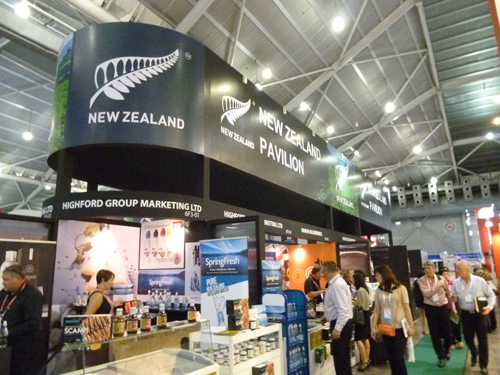Heading to Asia to promote your F&B products to potential buyers? Nada Young shares advice on how to get better results from your next market visit.
With one of Asia’s biggest food and beverage expos, HOFEX 2015, staged in Hong Kong from 6 to 9 May, many New Zealand exporters will have had a busy month of market visits to the region.
Virtually everyone involved in the international F&B trade in Asia attends HOFEX every two years. Amidst the teeming throngs, importers and exporters try to cram in meetings with their trade partners, rapidly working through the list of people to see while everyone is under one roof. Importers from around Asia also attend HOFEX to scope out new product sourcing opportunities, and to gauge current marketplace trends.
This face time between international contacts is often more symbolic than productive. It’s extremely difficult to have a serious conversation at a show like HOFEX. You must raise your voice to be heard above the din of the crowd while balanced on an uncomfortable stool in the midst of your trade partner’s busy expo booth.
To get more than a perfunctory result out of international travel and time away from home, crafting a schedule that also includes meetings with trade partners away from the chaos of the show is a good start. Utilising the inexpensive and convenient flights within the region to meet trade partners on their home turf is even more effective.
Planning for multi-country trips to Asia is a time consuming exercise. Schedule clashes, public holidays and major market disruptions, such as the recent GST implementation in Malaysia that has businesses frantic or the tense national elections that gripped Indonesia last year, add a layer of complexity not common in the Western world.
A sensible schedule will allow sufficient time in each market to conduct business, visit key accounts and survey the competition, while factoring in some down time. Few successful meetings are had when the inbound visitor is on the fifth day of a five-country visit and can barely keep their eyes open.
Choosing suitable meeting locations is often a trade-off between convenience, such as the ubiquitous Starbucks near the hotel, to an hour in crawling traffic across unfamiliar territory to meet at a potential partner’s office. Most seasoned international traders will agree that it’s worth the tedium of long cab rides to meet in the relative calm of an office. It also has the added advantage of providing a first-hand appraisal of the nature of the company and its operating environment.
Watch those samples
The topic of product samples is one that will often come up when arranging meetings with companies that may eventually become importers of your products. Logistically, depending on the type of product, taking samples on the road with you can either be a breeze (light weight ambient product) to very challenging (chilled or frozen, and highly perishable).
A strategic approach needs to be taken to deciding who to provide samples to, and on what basis. Ultimately, you need to assume that any samples you provide to would-be-suitors will probably be pitched to their customers, as very few importers will commit to a first order without first having confirmed demand from customers.
If you are talking to more than one company in a market about importing your products and you present them both with samples, it can be very embarrassing and damaging when they present those product samples to the same account. In the retail business, as there are often only a few major retailers in each country that stock premium Western goods, there is a high chance of problems occurring.
Being upfront and telling companies you’re providing samples to that you are exploring multiple distribution options in the market and that you are providing samples in the first instance for their internal evaluation only, rather than for presentation to key accounts, can reduce the chances of loss of face for your business and the importer in the eyes of key accounts.
Set clear goals
Having clear goals and objectives is important. A professional approach might involve sending meeting agendas ahead of time and walking away with clear action points and agreed deadlines for deliverables. Without some form of structure, precious time is wasted as the conversation wanders from point to point, briefly touching on important issues before moving on to the next topic.
Getting the most out of market visits requires a lot more attention than booking flights and finding accommodation. It takes good planning, a sensible schedule, the right setting for each meeting and a clear set of deliverables.
All this is most certainly worth the effort. With the rapid clip that emerging markets are developing, all eyes are on Asia right now. Being there is everything.
Nada Young is Asia Market director at Incite, a New Zealand owned export services firm (with offices in Auckland and Singapore) that manages business development and sales for a clientele of international F&B exporters in Southeast Asia, Hong Kong, South Korea and Taiwan. Email [email protected]




